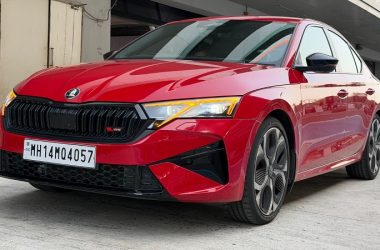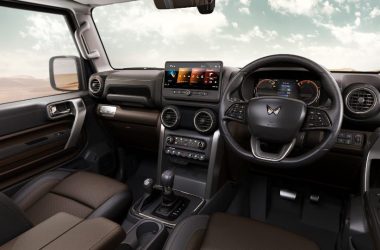The Hyundai Venue N Line, launched in 2022, represents the first-generation facelift variant for 2024. This model, available exclusively in petrol, starts at an ex-showroom price of 12 lakh, with the top model, the N8 variant (which we are reviewing), priced at 13.89 lakh. In contrast, the standard Venue starts at 7.89 lakh.
Designed for a sporty and fun driving experience, the Venue N Line features a tuned exhaust sound and suspension, boasting a 34% increase in damping force. This generation of the Venue, known by the codename QXi, is assembled in India, South Korea, and Taiwan.

Hyundai offers a 3-year unlimited kilometer warranty on the Venue N Line, which can be extended up to 7 years, along with 3 years of roadside assistance. The design follows Hyundai’s Sensuous Sportiness philosophy and was crafted by Chan-Hee Lee, Duck-Hyun Hwang, and Goo Lee. It’s built on the Hyundai-Kia K2 platform, shared with models like the i20, Verna, Creta, Alcazar, Kia Seltos, Carens, and Sonet.

The 5-year average yearly periodic maintenance service cost for the Venue N Line is approximately INR 3056. Its features include front and rear skid plates, a dark chrome grille, N Line emblem, Automatic LED projector headlamps with cornering lamp, LED DRL, high beam assist, and positioning lamp.

Among its exterior highlights are electrically adjustable auto-fold outside mirrors with a welcome function and turn indicators, side fenders with red highlights, and a 4-meter length and 1.6-meter height. The Venue has been rated highly for safety, earning the highest good rating from IIHS and 4 out of 5 stars from NHTSA and Australian NCAP.
The vehicle comes with 16-inch diamond-cut alloy wheels, disc brakes on both front and rear, red brake calipers, and 215/60 R16 95H MRF Wanderer ecotred street radial tires. The model we’re reviewing is in Shadow Grey, with White and Blue also available, and the dual-tone option includes a black roof.
The Venue N Line was first launched in India. It features front McPherson strut suspension with a coil spring and rear Coupled torsion beam axle with a coil spring. There are three drive modes: normal, eco, and sport, along with a Twin tip muffler and connecting LED tail lamps.
Additional features include a rear wiper-washer with a timer, rear defogger, high mount stop lamp, spoiler, and the Hyundai Smartsense Level 1 ADAS system, which includes several advanced safety features.
The Venue N Line offers a key remote for engine start, comprehensive safety features like 6 airbags, ABS, EBD, ESC, BAS, VSM, HAC, rear parking sensors, a rear camera, a Tyre pressure monitoring system, and much more. It also comes with a 3-year BlueLink subscription, allowing access to over 60 car features through a smartphone app.
Customers can choose from over 25+ Hyundai genuine accessories. The car boasts a 311-liter boot space, a 15-inch steel spare wheel, and a 6-speaker music system. The interiors are designed with black leatherette upholstery with red inserts, 2-step reclining rear seats, adjustable headrests, a passenger seat back pocket, 60/40 split folding rear seats, and tilt steering with red ambient lighting.
Convenience features include a driver-side auto up-down power window with jam protection, a 4-way power-adjustable driver seat, motor-driven power steering, metal pedals, and various control buttons including light, camera, traction control off, auto start-stop off, and engine start-stop.
The transmission options include a 7-speed dual-clutch DCT automatic and a 6-speed manual. The gear knob is finished in leatherette with an N logo. The Venue N Line also comes equipped with a wireless phone charger, fully automatic temperature control AC with a digital display, and an 8-inch HD infotainment system supporting multiple features.
The N6 variant has a different infotainment system without HD and BlueLink. Other features include a cooled glovebox, an electrochromic rearview mirror with Telematics switches for emergency SOS, roadside assistance, and BlueLink buttons, and a dashcam in the N6 variant.
The car boasts a smart electric sunroof, a 3-spoke leatherette-wrapped steering wheel with an N logo, controls for phone, volume, infotainment, voice, an instrument cluster with lane keeping assist and cruise control, and a digital instrument cluster with a TFT multi-information display.
The engine is a 1000 cc, inline 3-cylinder, Hyundai Kappa II turbo GDi petrol engine, offering 118 horsepower, 172 Nm torque, 18 kmpl fuel efficiency, and a 45-liter fuel tank. This engine is also used in models like Verna, Grand i10, i20, i30, Casper, Aura, Kona, Kia Sonet, Picanto, Ceed, and Rio.







